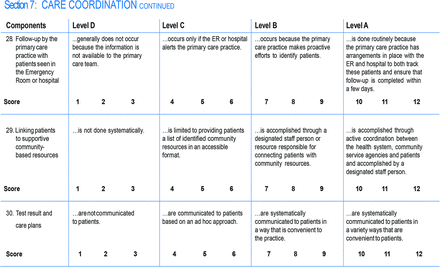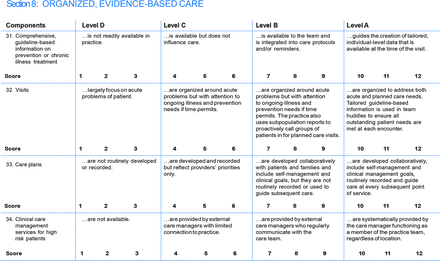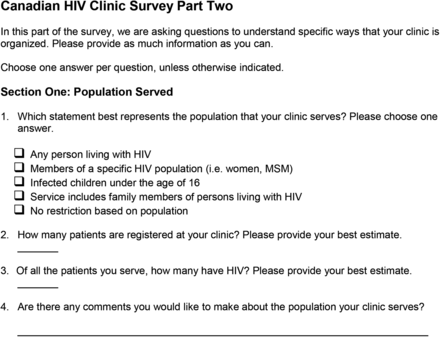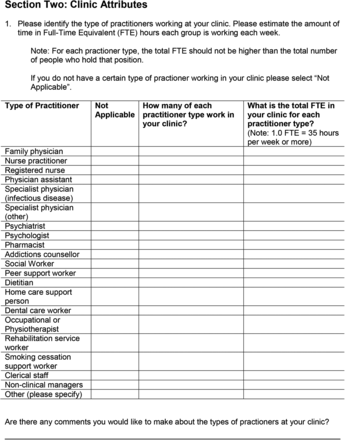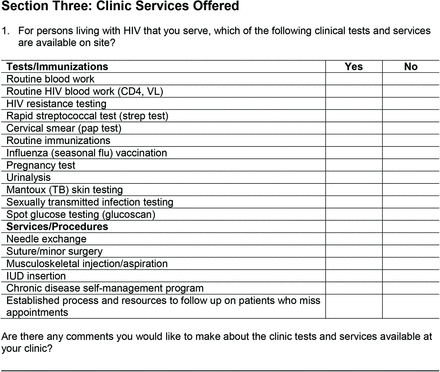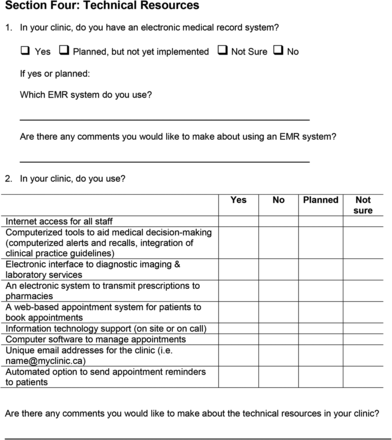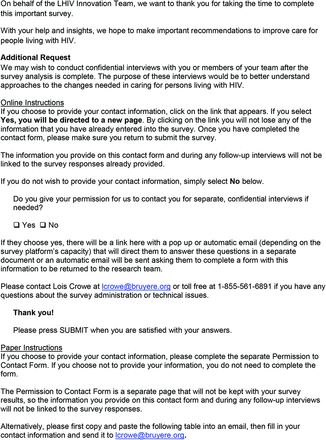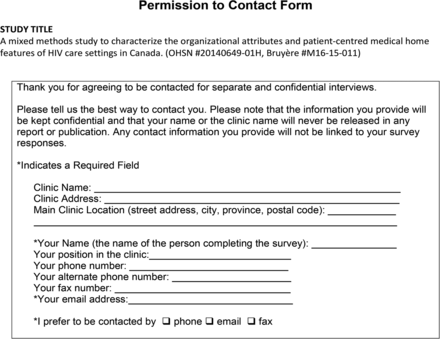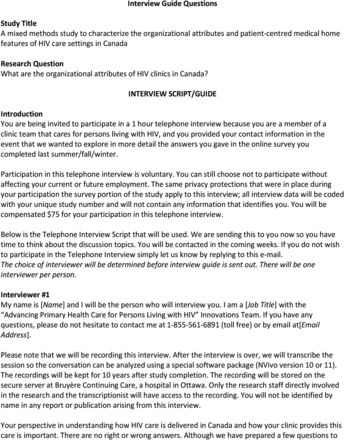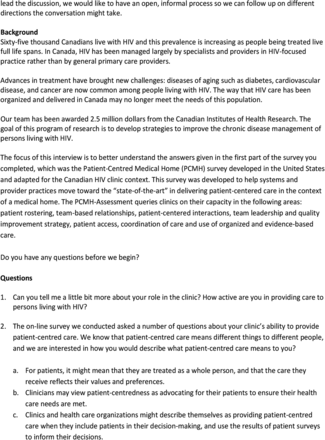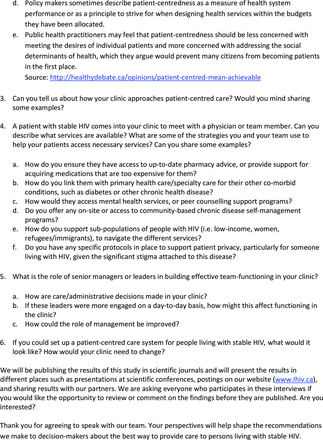Article Figures & Data
Figures
Tables
Domain Definition 1: Patient rostering Patients are assigned to specific providers and care teams. Patient data is routinely used for scheduling purposes and monitored to balance supply and demand. Electronic medical records on individual patients are available to practice teams. Reports on care processes are provided. 2: Continuous, team-based healing relationships Patient sees their own provider or team. Non-physician practice team members perform key clinical service roles that match their ability and credentials. Staff is properly trained for roles and responsibilities. 3: Patient-centered interactions Patients are driving their care. Patient and family values and preferences are assessed and incorporated in planning and organizing care. Communication techniques are used, such as translation services, to ensure the patient can understand. Self-management support is provided. Patient-centeredness is consistently used to guide organizational changes. Frequent and actionable input from patients and family members is used for quality improvement. 4: Engaged leadership Leaders support continuous learning, review and act upon quality data, and have long-term strategy and funding commitment to explore and implement change. Clinical leaders champion and engage clinical teams in improving patient experience of care and clinical outcomes. Hiring and training supports and sustain improvements. Responsibility for quality improvement activities is shared by staff, and time is protected to meet to engage in quality improvement. 5: Quality improvement strategy Electronic health record and other health information technology used to support population management and quality improvement efforts. Feedback provided to care teams and staff to improve processes and outcomes. Performance measurement is used and reported back to providers. 6: Enhanced access Appointments are flexible and can accommodate customized visit lengths, same-day visits, and scheduled follow-up. Choice of phone, e-mail to contact the practice team during normal hours. After-hours access is available. Enhanced access includes eliminating barriers to care including those related to a patient's ability to pay. 7: Care coordination Care coordinated within practice, creating a care hub, and between the practice and outside services. Team reaches out and connects in meaningful ways with other sources of service, and communicates consistently and without delay. 8: Organized, evidence-based care Guideline based care that incorporates preventative and chronic illness needs. Visits are organized to address both acute and planned care needs. Case managers are available, and used for high risk patients. Care plans are developed collaboratively, including clinical management. PCMH, patient-centered medical home.
Score Level Interpretation 10 to 12 A Most or all of the critical aspects of the key change addressed by the item are well established in the practice. 7 to 9 B The basic elements of the key change have been implemented, although the practice still has significant opportunities to make progress with regard to one or more important aspects of the key change. 4 to 6 C The first stage of implementing a key change may be in place, but that important fundamental changes have yet to be made. 1 to 3 D Absent or minimal implementation of the key change addressed by the item. PCMH-A, patient-centered medical home assessment.
Source: http://www.safetynetmedicalhome.org/sites/default/files/PCMH-A.pdf.
- Table 3.
PCMH-A Scores of Primary and Specialist Canadian HIV Care Settings by Type of Care Settings and Interpretation
Domain Primary Care (n = 12) Specialist Care (n = 10) Interpretation P-Values for t-Test Mean SD Mean SD Mean Score (/12) Level (A-D) 1: Patient rostering 7.98 2.26 8.53 2.46 8.23 B .594 2: Team-based relationships 8.61 2.04 9.92 2.15 9.20 B .160 3: Patient-centered interactions 7.35 1.82 8.53 2.49 7.89 B .213 4: Engaged leadership 8.02 2.09 8.19 2.63 8.10 B .866 5: Quality improvement 7.31 2.25 7.05 2.39 7.19 B .794 6: Enhanced access 8.11 2.35 6.53 2.40 7.39 B .136 7: Care coordination 8.49 1.43 8.24 2.04 8.37 B .743 8: Evidence-based care 8.07 2.03 8.13 2.47 8.09 B .954 Total 7.99 1.36 8.14 1.79 8.06 B .831 PCMH-A, patient-centered medical home assessment; SD, standard deviation.













